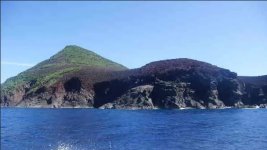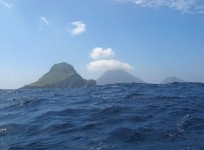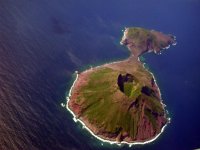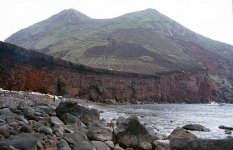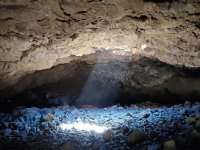KANACKI
Bronze Member
- Mar 1, 2015
- 1,445
- 5,933
- Primary Interest:
- All Treasure Hunting
Hola Amigos
What can I say?
The following legend or story is just a unsolvable mystery. I have no idea that these events actually happened or was just hoax story created in the early 1950's? Or had some basis in some truth regardless of the baseless claims of a treasure being found on a cave off Japan with gold and silver, being connected to Captain Kidd.
Straight away that aspect of the story rang alarm bells that story was perhaps just a silly invention of a reporter looking for gap filler in the newspaper?
The following newspaper article Sydney Morning Herald (NSW : 1842 - 1954), Monday 23 June 1952, page 3
Capt. Kidd's Treasure
"In A Cave"
TOKYO, June 22 (A.A.P.-Reuter). - The Tokyo newspaper "Mainichi" said to-day that
Japanese treasure-hunters had found the treasure of the British pirate, Captain William Kidd.The newspaper said the treasure was hidden in a cave on tiny uninhabited Yokoate Island near Amanio Shima ; northernmost island of the Ryukyu group
In the cave were many "steel chests." On opening one of them the Japanese found silver bars and old coins. "Mainichi" said that Masahiro Nagishima, who financed the expedition had said he would give all the treasure to the Japanese Government
The treasure was worth ?stg100 million In London treasure-hunter George Shepherd said he is organising a small expedition to search for the treasure. He thought it improbable the Yokoate treasure was Captain Kidd's.
"There is no record of Captain Kidd ever having been in Japanese waters,"Shepherd said. "I think he buried his treasure near Singapore?
Was there more to this yarn?
Kanacki
What can I say?
The following legend or story is just a unsolvable mystery. I have no idea that these events actually happened or was just hoax story created in the early 1950's? Or had some basis in some truth regardless of the baseless claims of a treasure being found on a cave off Japan with gold and silver, being connected to Captain Kidd.
Straight away that aspect of the story rang alarm bells that story was perhaps just a silly invention of a reporter looking for gap filler in the newspaper?
The following newspaper article Sydney Morning Herald (NSW : 1842 - 1954), Monday 23 June 1952, page 3
Capt. Kidd's Treasure
"In A Cave"
TOKYO, June 22 (A.A.P.-Reuter). - The Tokyo newspaper "Mainichi" said to-day that
Japanese treasure-hunters had found the treasure of the British pirate, Captain William Kidd.The newspaper said the treasure was hidden in a cave on tiny uninhabited Yokoate Island near Amanio Shima ; northernmost island of the Ryukyu group
In the cave were many "steel chests." On opening one of them the Japanese found silver bars and old coins. "Mainichi" said that Masahiro Nagishima, who financed the expedition had said he would give all the treasure to the Japanese Government
The treasure was worth ?stg100 million In London treasure-hunter George Shepherd said he is organising a small expedition to search for the treasure. He thought it improbable the Yokoate treasure was Captain Kidd's.
"There is no record of Captain Kidd ever having been in Japanese waters,"Shepherd said. "I think he buried his treasure near Singapore?
Was there more to this yarn?
Kanacki


